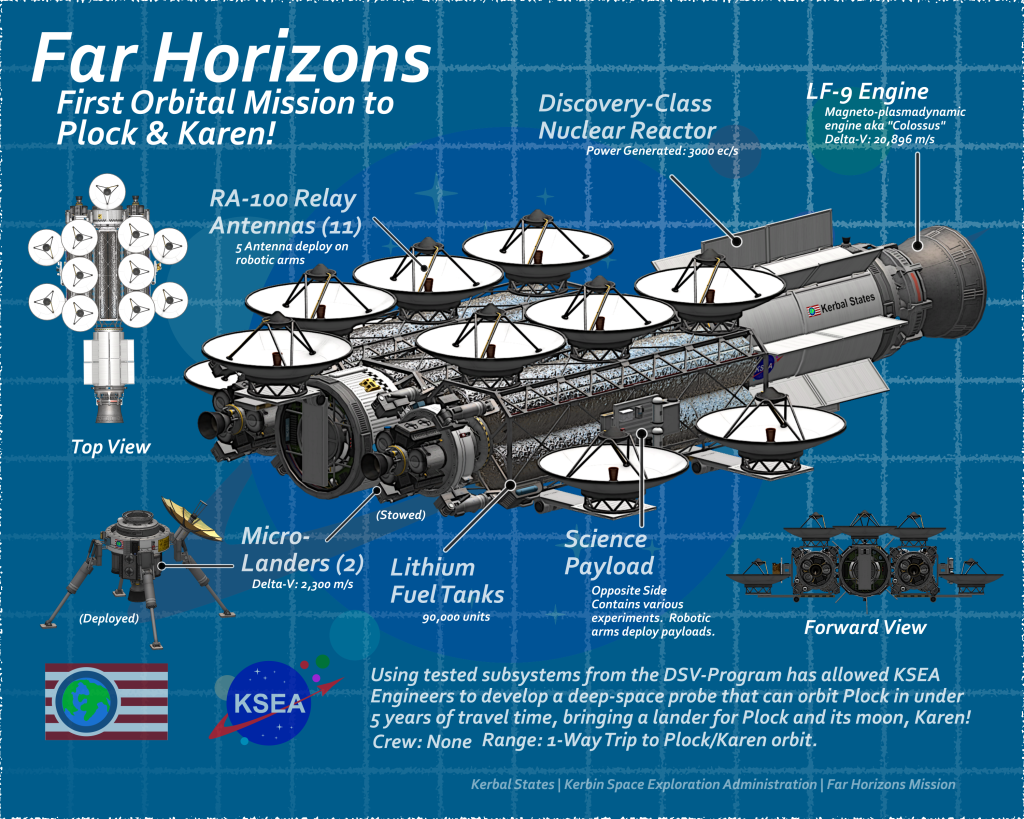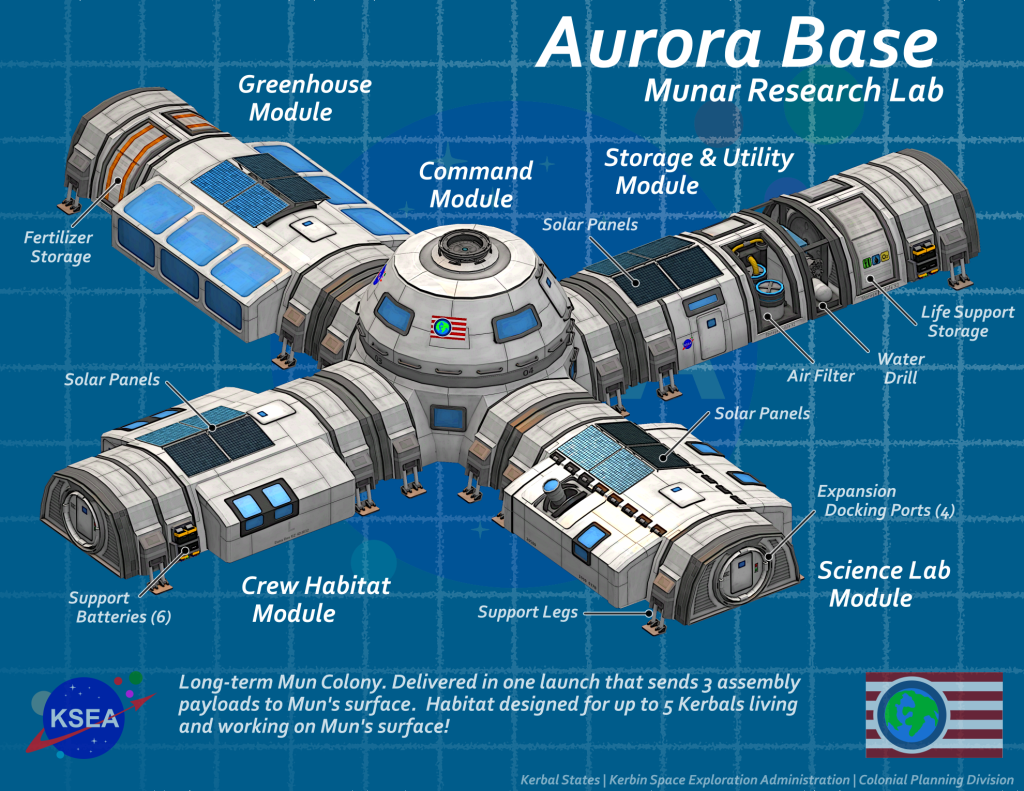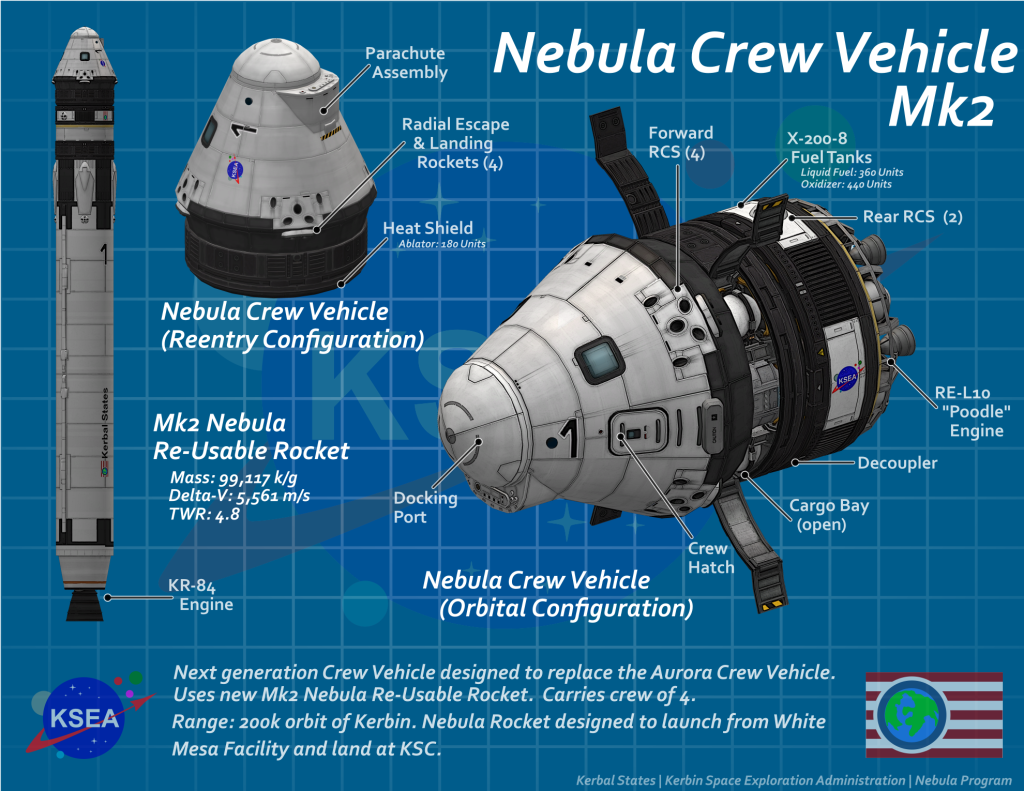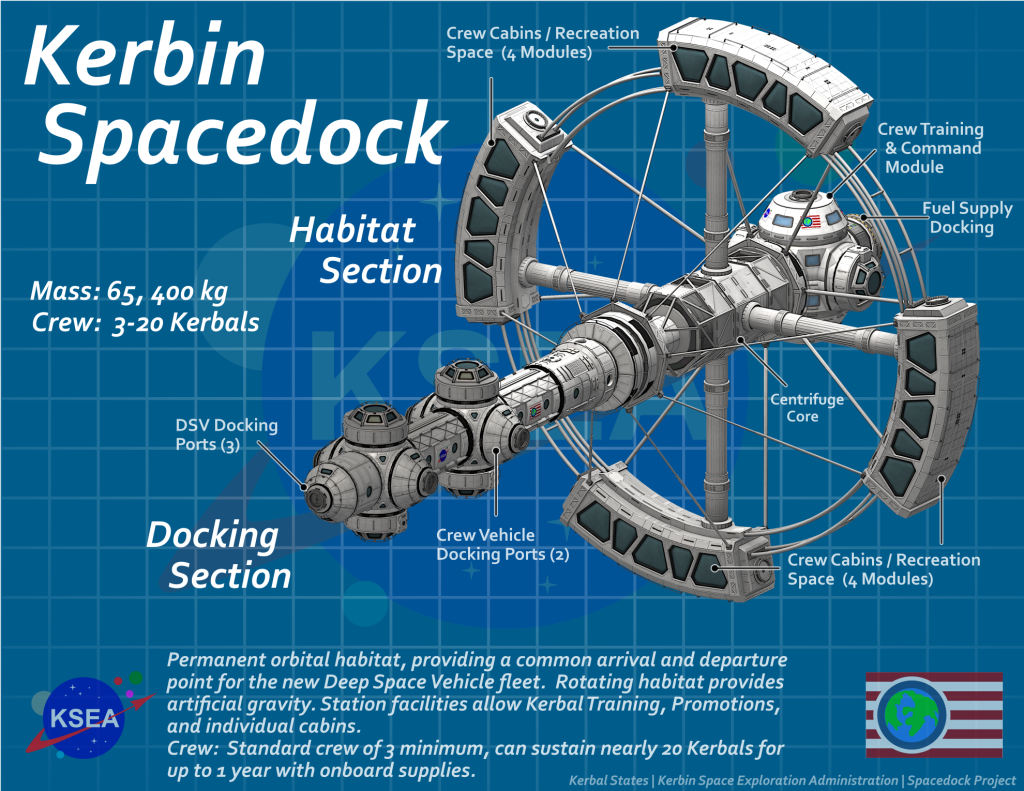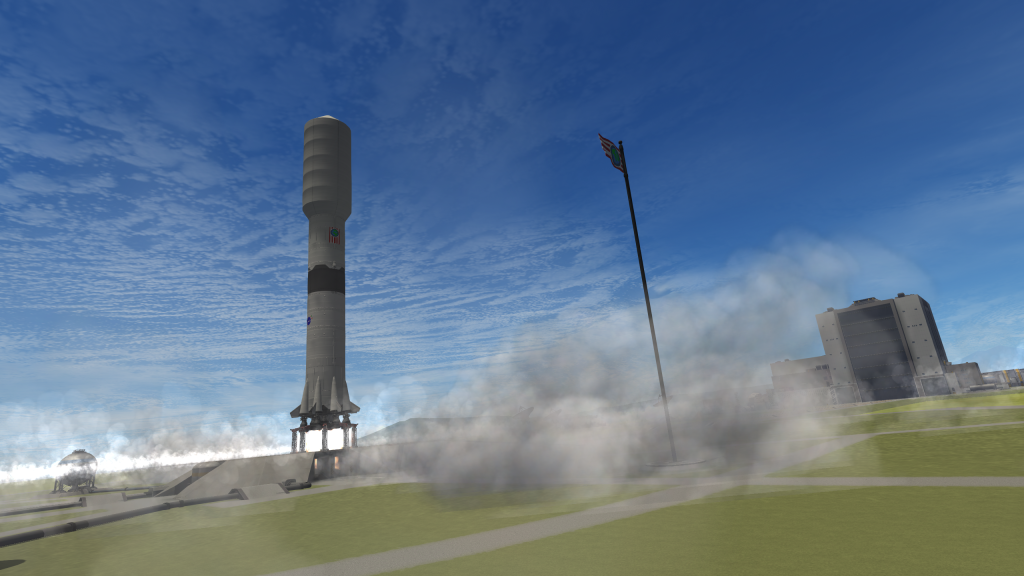
The most far-flung mission ever attempted is ready to launch – the Far Horizons mission to Plock! While there is some debate about whether or not Plock is actually a planet or maybe an asteroid, most Kerbals do agree that it is quite interesting regardless!
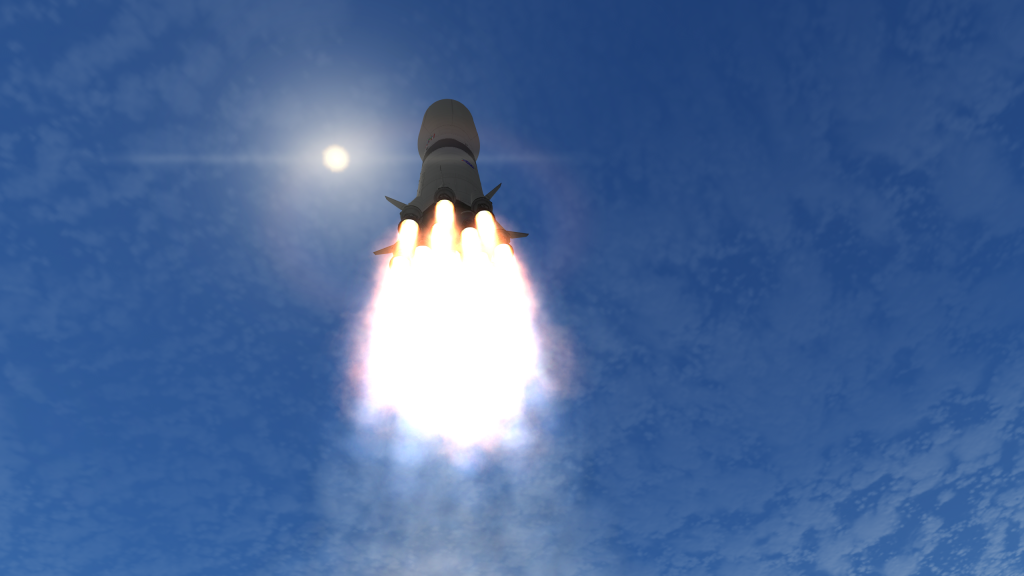
The powerful Nova Rocket carries the probe off the launch pad!
“Wow – look at it go!”
-Edan, watching at Mission Control
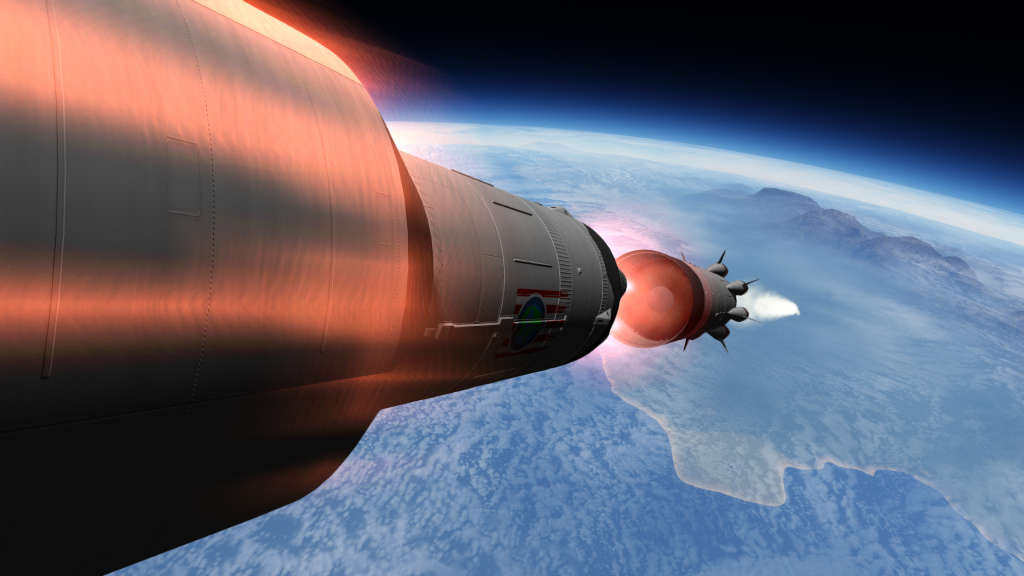
The Nova Rocket’s first stage detaches, falling toward Kerbin…
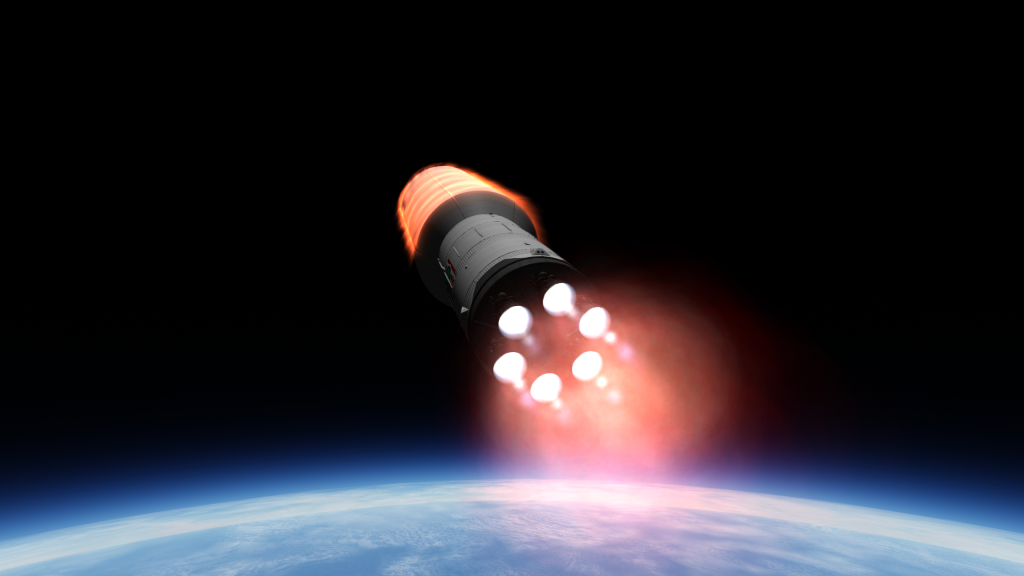
… while the second stage lifts the probe to a very high orbit of 900k!
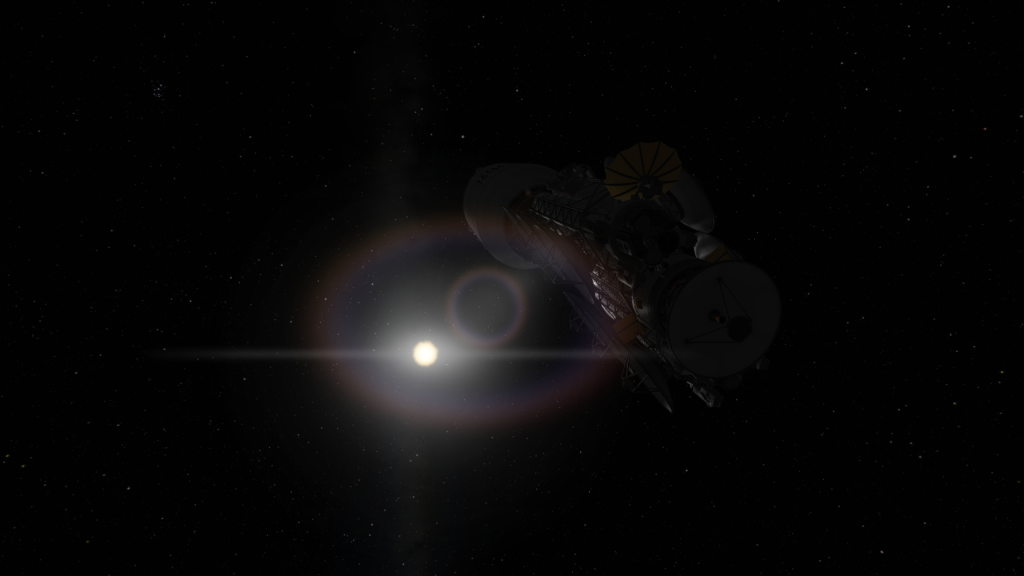
Mission Control will spend the next week testing subsystems and ensuring that Far Horizons is ready for it’s trip! Departure is expected by the end of the year!
